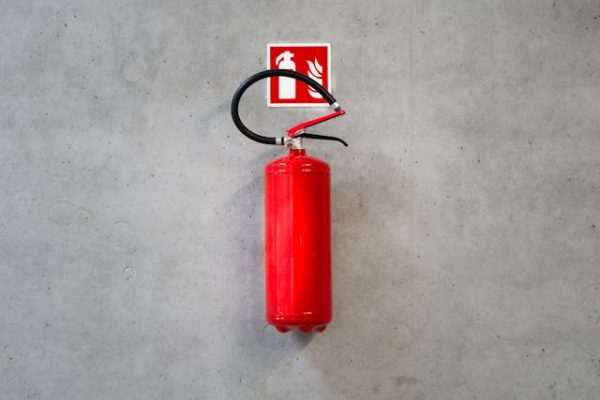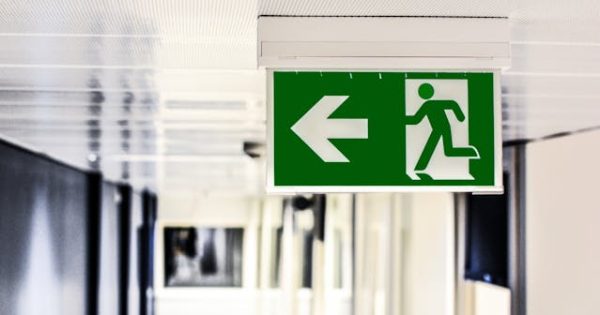
Fireproofing commercial buildings is critical for the safety of occupants, protection of assets, and compliance with local regulations. Implementing the best practices not only reduces fire risk but also minimizes potential damage, ensuring business continuity.
In this article, we’ll explore some effective strategies to fireproof commercial buildings and learn how building restoration services can help keep your property protected for the long term.
Conduct a Fire Risk Assessment
Before implementing fireproofing measures, it’s essential to assess the building’s fire risks. A professional fire risk assessment will identify potential hazards, such as flammable materials or faulty electrical systems, and evaluate the building’s existing fire safety measures. This initial step provides the foundation for a targeted fireproofing strategy tailored to the building’s specific needs.
Engage professionals who specialize in fire risk assessments to ensure a comprehensive evaluation. Their expertise can provide valuable insights into potential vulnerabilities and recommend appropriate measures to mitigate risks.
The key areas they will check include:
- structural vulnerabilities
- fire detection systems
- emergency escape routes
- storage and handling of combustible materials
Install Fire-Resistant Materials
Choosing the right materials is one of the most critical aspects of fireproofing commercial buildings. Fire-resistant materials can withstand high temperatures and limit the spread of fire. They can also reduce the time it takes for flames to compromise the structural integrity of the building.
Some widely used fire-resistant materials are:
- Concrete: Known for its durability and fire-resistant properties, concrete can withstand extreme temperatures and slow down the spread of fire.
- Gypsum: Used in drywall and ceiling tiles, gypsum acts as a fire barrier and releases moisture when exposed to heat, reducing the fire’s impact.
- Intumescent Paint: This special coating expands when exposed to heat, creating an insulating barrier that helps protect steel structures from weakening.
Incorporating these materials during construction or renovation is key to effective fireproofing.
Maintain Effective Fire Detection and Alarm Systems
Maintaining effective fire detection and alarm systems is crucial for minimizing damage and saving lives. Commercial buildings should be equipped with modern fire detection systems, such as smoke detectors, heat detectors, and alarms, which can notify occupants and emergency services as soon as a fire is detected.
Regular maintenance of these systems is also essential. Fire detection equipment should be inspected and tested regularly to ensure it functions correctly when needed. This includes tasks like cleaning sensors and detectors, replacing batteries, and checking alarm sound levels.
Ensuring your fire detection systems are in working order can significantly reduce the risk of uncontrolled fires.
Establish Safe Fire Exit Routes

An effective fireproofing strategy isn’t complete without planning for safe evacuation. Clearly marked fire exits and escape routes help occupants leave the building quickly and safely during an emergency. Hence, evacuation routes should always be free of obstructions, well-lit with emergency lighting, and equipped with clear signage.
In addition, conducting regular fire drills ensures that all building occupants are familiar with escape procedures, reducing panic in real emergency situations.
Use Fire Suppression Systems
Installing fire suppression systems, such as sprinklers, can dramatically reduce fire damage. These systems activate automatically when they detect heat or smoke, quickly containing and controlling the fire. Different types of fire suppression systems include:
- Water Sprinklers: Effective for most commercial buildings, water sprinklers extinguish or control fires by releasing water when triggered.
- Gas Suppression Systems: Ideal for areas where water could damage equipment, such as server rooms, gas suppression systems release gases that suppress flames without leaving harmful residues.
Routine inspections and maintenance of these systems are necessary to ensure they are functioning properly when needed.
Professional Fireproofing Support
Fireproofing is an ongoing process that requires regular updates and inspections to ensure compliance with fire safety regulations. For older structures, engaging building restoration services can provide a thorough evaluation and implement the latest fireproofing technologies.
Professionals in the field can identify areas of weakness and reinforce the building’s fire resistance. They can also provide regular cleaning and maintenance solutions, which can help prevent the accumulation of flammable materials and reduce fire risk. All these can keep buildings compliant and protected in the long term.
Conclusion
Fireproofing commercial buildings involves more than just installing fire alarms. It’s a multi-layered approach that includes using fire-resistant materials, maintaining detection systems, and establishing safe escape routes.
Adopting these best practices outlined above can significantly reduce fire risk and contribute to a safer, more resilient building. That said, prioritize fireproofing in your commercial property to safeguard your investment and ensure peace of mind.

